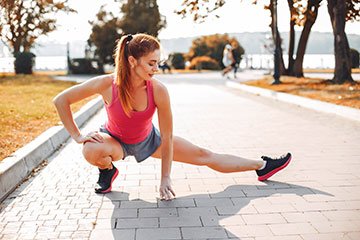Cankles may not be a serious medical condition in and of itself, but they can be unattractive, upsetting to one’s self-esteem, and they may also be indicative of underlying cardiac issues. It’s crucial to first comprehend what these “cankles” are. This word was developed informally to represent the area of the lower leg where the calf muscles and ankles meet and there is no clear division between them. The ideal ankle shape is tapered and slender. Occasionally, nevertheless, a person’s calf and ankle fail to be defined, giving the area above the foot a full or “swollen” appearance.
Causes of Cankles
- It’s a genetic trait: Your anatomy might occasionally be influenced by your family history. You might have “thick” ankles if one of your parents did. Even if you are healthy weight and routinely exercise, this could be caused by being overweight or having less natural definition between your calves and ankles. If you’re overweight or obese, reducing weight and doing regular exercise can help your lower legs look better and toned, which indirectly benefits your ankles. Remember that spot-reducing any one area of the body is quite challenging, but managing your weight and eating healthy can give you the desired results to a certain extent.
- Poor blood flow: Cankles are a common pregnancy complication because of decreased blood flow and physical exertion. Actually, swelling and fluid retention, both of which are consequences of a compromised circulatory system, are what provide the appearance of cankles. Everything should return to normal after the pregnancy is complete, and the cankles typically disappear on their own. You may have water retention if your lower legs are swollen even when you are not pregnant. A part could be played by inadequate nutrition or excessive sodium intake. Reduce foods with a high salt content and increase your intake of fruits and vegetables to enhance your general health and lessen inflammation in your body. Getting at least 30 minutes of consistent exercise each day is also a good idea. Physical activity does help to increase blood flow and reduce water retention.
- Varicose veins: The oxygen-rich blood that circulates throughout the body is transported back to the heart by the veins. However, damage to vein walls or valves might result in a condition known as chronic venous insufficiency. Varicose veins are a sign of CVI, along with swelling and skin discoloration. Blood starts to reflux or pool when it cannot return up to the heart. Varicose veins are then caused by twisted, enlarged vessels.
- Other reasons: A sudden onset of swollen ankles and fluid retention in the body is a rare sign of renal, liver, or heart failure. Immediately seek medical care if you have any of these symptoms.
If your cankles are due to any medical condition, then it is important to consult a doctor. But if they are caused due to excess weight or a genetic trait, you can consider exercise to get rid of it.
- Weighted calves lift: Hold a dumbbell in each hand, stand straight, push down with your entire body weight, lifting your heels off the floor at the same time, and then slowly lower them back down. Do the same thing ten times while seated.
- Stair Calf Raises: Put yourself on the edge of a stair-like high platform. Put your hands on your hips, stand tall, lift your feet off the ground, and then lower them back down. Repeat this method fifteen times.
- Kneeling Jog in Place: Stay upright. Jog in a fixed position while lifting your left leg and right arm to knee height. Then, change to using your right leg and left arm. Repeat 20 times, increasing up the speed and intensity each time.
- Lunge and Squat Calf Raises: Kneel on one leg, keep it steady and raise the ankle of the other leg and return it to the floor. Do this sequence with both legs for about ten times, in a lunging and squatting position.
- Squat and Lunge Calf Raises: Lift the ankle of the opposite leg and lower it to the floor while maintaining stability on one leg. Perform this series while lunging and squatting ten times with each leg.
You may ensure that your calf muscles are properly molded and well-defined by regularly practicing these workouts. However, keep in mind that weight loss is holistic rather than spot-reducing, just as weight growth affects all parts of the body equally and is not restricted to any particular location. Additionally, maintaining a well-balanced diet rich in all necessary nutrients and reducing salt intake are vital for effectively getting rid of those cankles.
